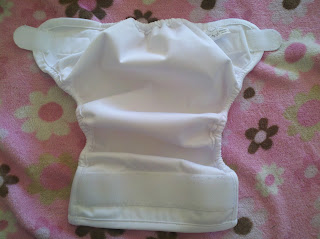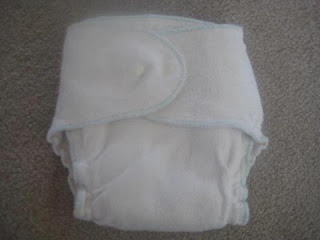I'm not going to go too far into explaining it. I'll post links at the bottom for your researching pleasure, though!
What Is It?
Oil cleansing is exactly what it sounds like, cleansing your skin with oil. Don't run away yet! I know how it sounds, kind of crazy, right? Cleansing my dirty, oily skin with more oil? Well, let's think about it. Commercial cleansers are made to strip away the make up, dirt, oils, etc. from our skin. When we take natural oils away from our skin, it signals our body to make more. This often makes our bodies overproduce oil. It definitely did for my skin! As far as how the oil actually cleanses your skin, I'm not going to pretend I'm an expert. While I was researching the method and how it works, I found that oil actually dissolves oil. To me this means you'll be cleaning your face the most natural way.
I have been using this method for about a month. My face overall has seen huge improvements, huge! I used to get annoying bumps on my forehead, around my hairline, along with bigger pimples around my chin, and a few at random places on my face. Since I have been using it, I still get a few blemishes around my chin, but overall it has changed my skin for the better. When I used a commercial cleanser on my face at night, I would wake up with so much oil that I had to cleanse when I woke up. Now, I cleanse at night and just splash my face with water in the shower in the morning. I haven't used moisturizer on my face since I started this method, I simply don't need it. I'm not saying this will be the case for everyone. Sold yet? If not, look at my before/after pictures only a week after switching.
Disclaimer: All the pictures I'm sharing are taken from my phone. I happen to have the worst iPhone camera of all iPhone owners, so I apologize.
These pictures are exactly one week apart. I'm wearing no make up other than a little mascara. I realize the lighting is different but looking past that you can see the huge improvement it has made.
How To:
Now on to how you actually do the oil cleansing method. The main thing you'll obviously need is oil. Everyone's skin is different, so you have to find the oil that fits your needs best. I found Crunchy Betty's list to be very helpful when trying to find the best oils for my skin type.
http://www.crunchybetty.com/nitty-gritty-on-the-oil-cleansing-method
After reading her blog I decided to use Caster oil, avocado oil, and apricot kernel oil. These fit my needs and were in my price range. The first mixture I made was for normal skin types, which is equal parts caster oils and carrier oils. That seemed too drying for my skin, so I switched to the dry skin formula which is one part caster oil to two parts carrier oil. If you are worried about it being too expensive for you let me show you why it's not.
I have been using this method for about a month. My face overall has seen huge improvements, huge! I used to get annoying bumps on my forehead, around my hairline, along with bigger pimples around my chin, and a few at random places on my face. Since I have been using it, I still get a few blemishes around my chin, but overall it has changed my skin for the better. When I used a commercial cleanser on my face at night, I would wake up with so much oil that I had to cleanse when I woke up. Now, I cleanse at night and just splash my face with water in the shower in the morning. I haven't used moisturizer on my face since I started this method, I simply don't need it. I'm not saying this will be the case for everyone. Sold yet? If not, look at my before/after pictures only a week after switching.
Disclaimer: All the pictures I'm sharing are taken from my phone. I happen to have the worst iPhone camera of all iPhone owners, so I apologize.
These pictures are exactly one week apart. I'm wearing no make up other than a little mascara. I realize the lighting is different but looking past that you can see the huge improvement it has made.
How To:
Now on to how you actually do the oil cleansing method. The main thing you'll obviously need is oil. Everyone's skin is different, so you have to find the oil that fits your needs best. I found Crunchy Betty's list to be very helpful when trying to find the best oils for my skin type.
http://www.crunchybetty.com/nitty-gritty-on-the-oil-cleansing-method
After reading her blog I decided to use Caster oil, avocado oil, and apricot kernel oil. These fit my needs and were in my price range. The first mixture I made was for normal skin types, which is equal parts caster oils and carrier oils. That seemed too drying for my skin, so I switched to the dry skin formula which is one part caster oil to two parts carrier oil. If you are worried about it being too expensive for you let me show you why it's not.
Here are my 3 oils. 16 fl oz, 8.5 fl oz, and 8 fl oz.
There are 3 teaspoons in this container. For my skin type I do one tsp of each oil. This lasts me about 9 days, using about a quarter sized amount once a day.
I've been doing this about a month, and today I mixed my third batch. The initial cost is a little daunting, but it will last you a long time as you can see.
Now let's get to how you cleanse your face with the oils.
Step 1. Dampen your face with warm water. (I have read to do this, as well as not to. I do this personally, but do whatever you think it best)
Step 2. Put the oil in your palm, and rub your hands together. Rub the oil on your face in an upward manner. When you get to around your eyes use only your ring fingers and move from outward, in. (This is the cosmetologist in me, you don't want to pull on your skin and give yourself wrinkles!) Massage for about 2 minutes. I find the massage really important. On the days I feel lazy and only rub the oil enough to put it on, my skin doesn't feel as clean.
Step 3. Let the oil sit on your face for 30 seconds or so. I usually take that time to brush my teeth.
Step 4. With fairly warm water, saturate your wash cloth and remove the oil from your skin. Still being gentle and in an upward manner.
You don't need to remove any of your make up before doing this. It takes everything off including mascara.
If you have blemishes starting to show up, you can use a q-tip with tea tree oil (aka melaleuca oil) or any other oils that you find effective and put it on the pimple rather than store bought, chemical filled creams.
Where To Buy:
I'm sure you can find these oils at your local health food store. I would suggest buying organic and cold pressed oils. This means they are in the purest form so they can benefit your skin like you are wanting them to. I bought mine online. Mostly because I'm lazy and don't want to go store to store to find the right kind. Also because it can be pricey in health food stores. I found mine here:
Great prices and it came in about a week if I remember correctly.
Here are a couple other good sites to read about oil cleansing along with the site mentioned earlier:

.jpeg)




















.jpg)
.jpg)



.jpg)
.jpg)














